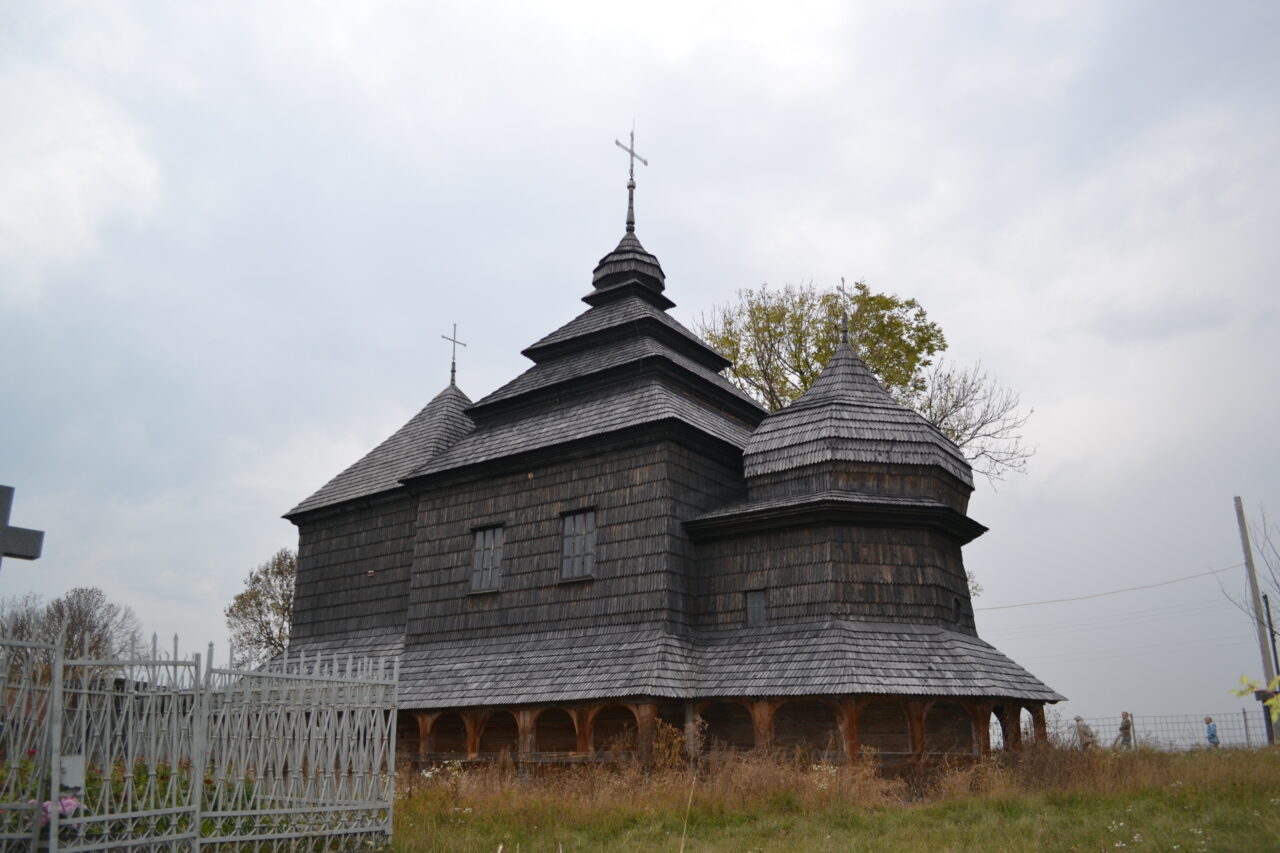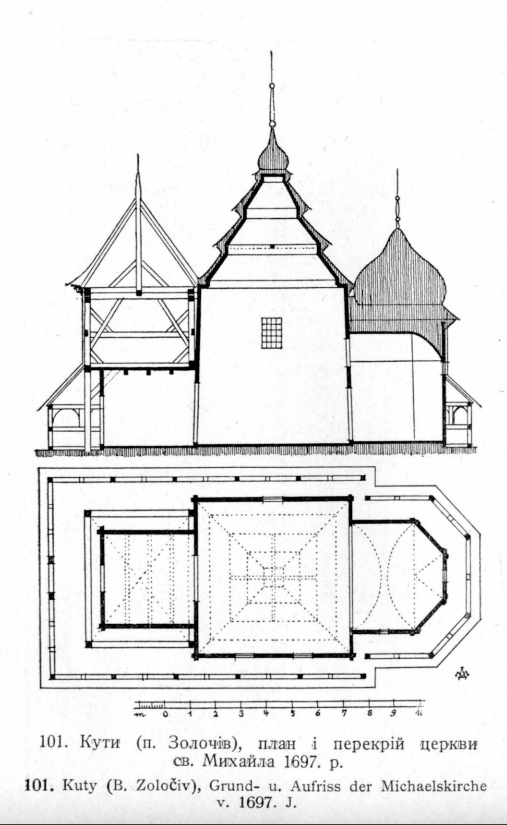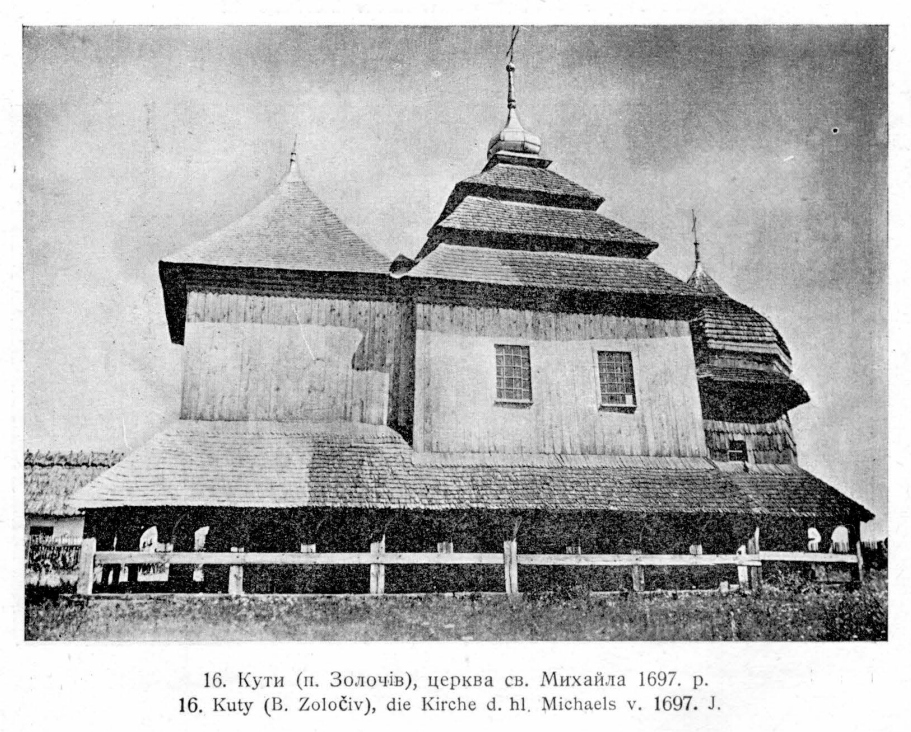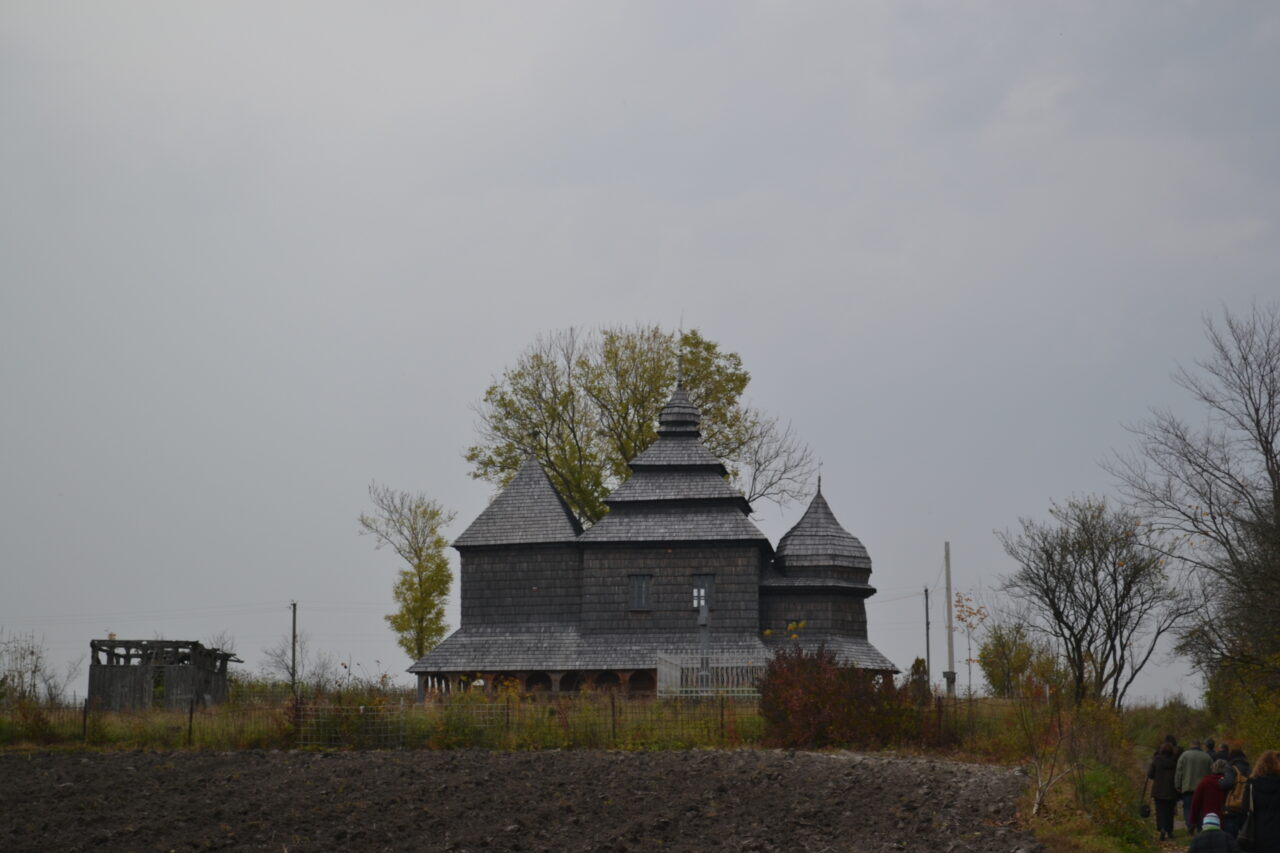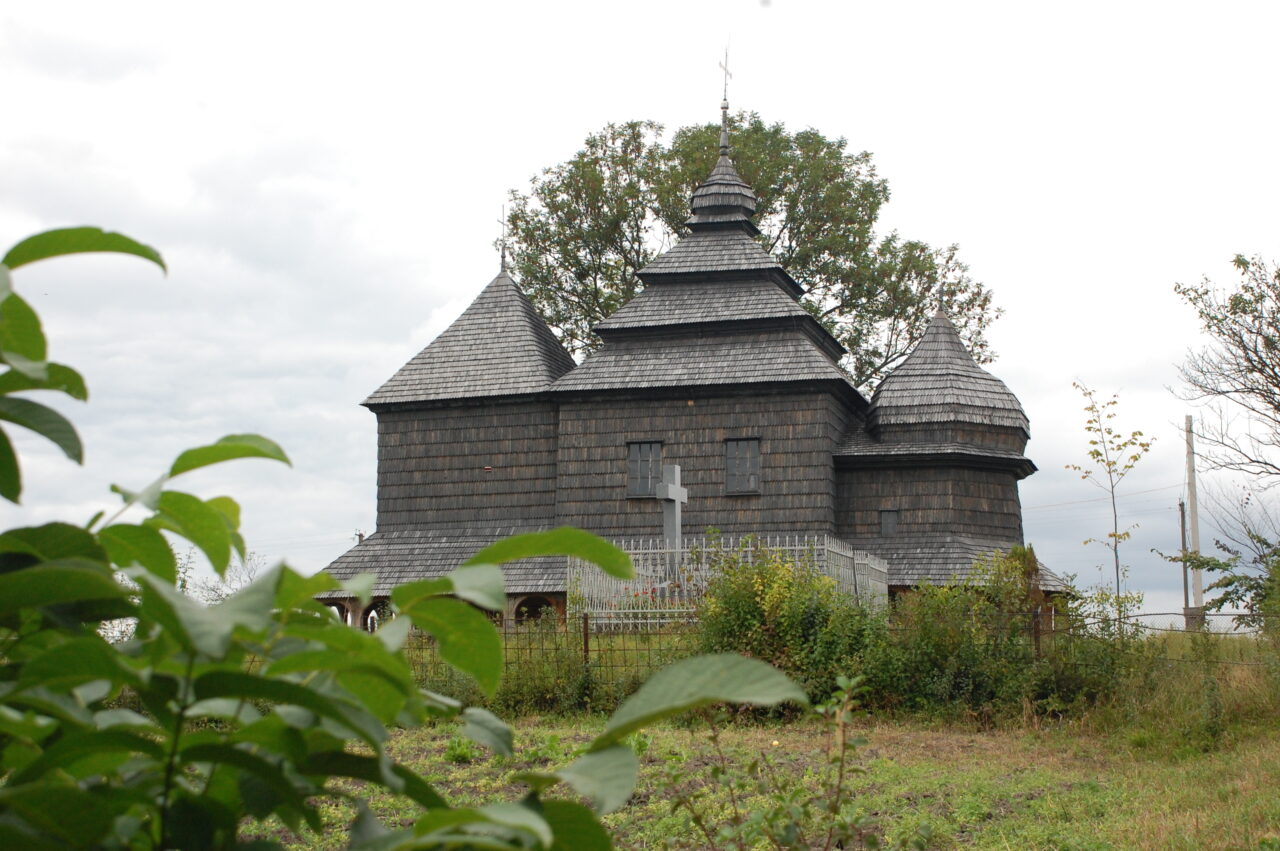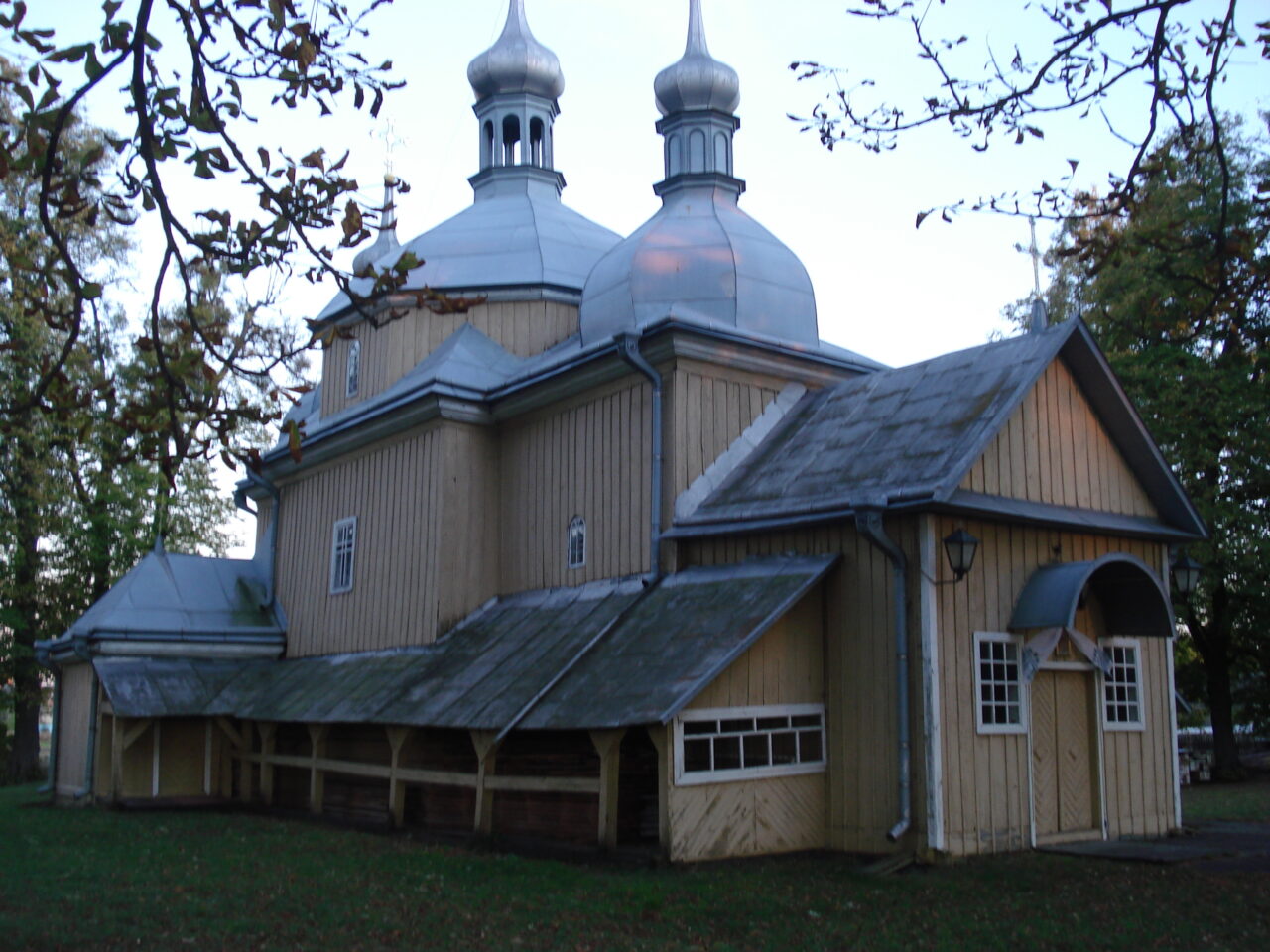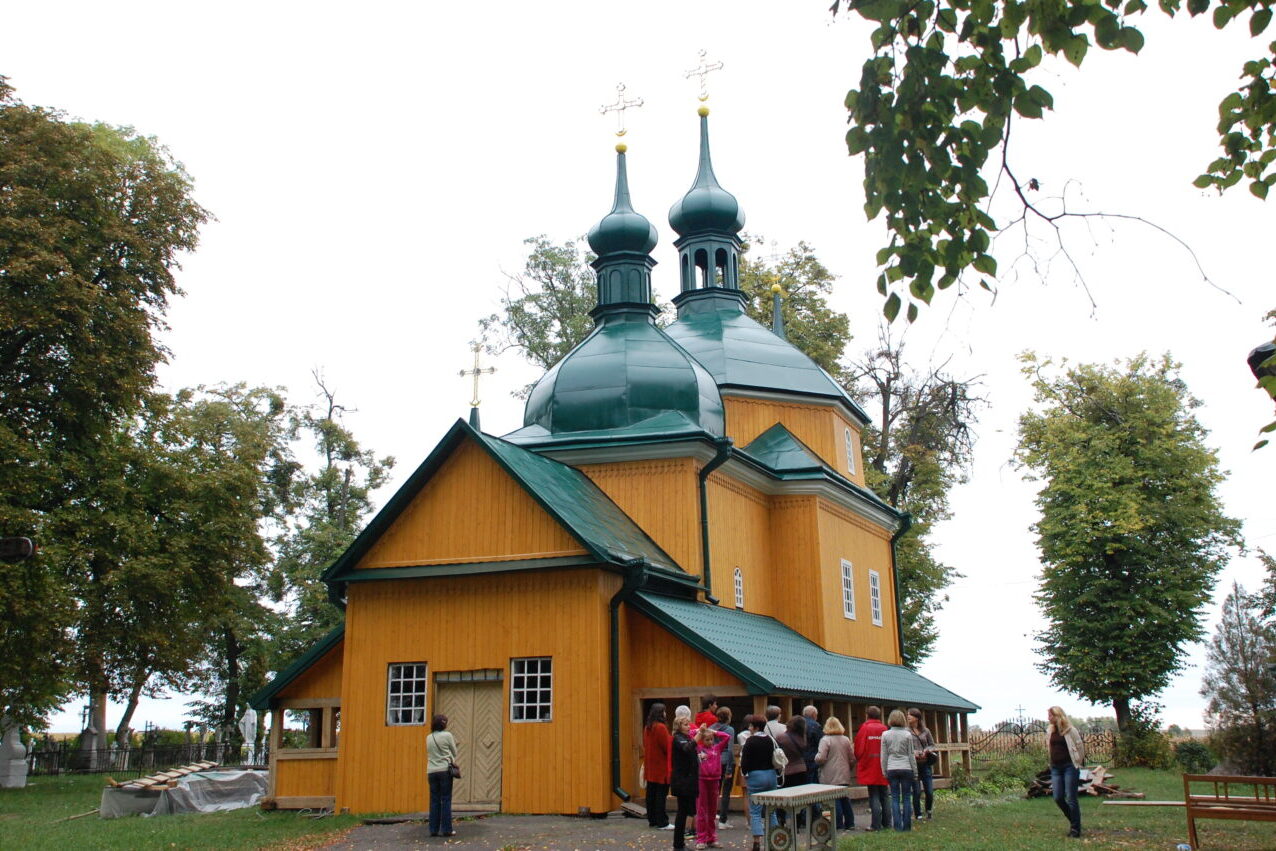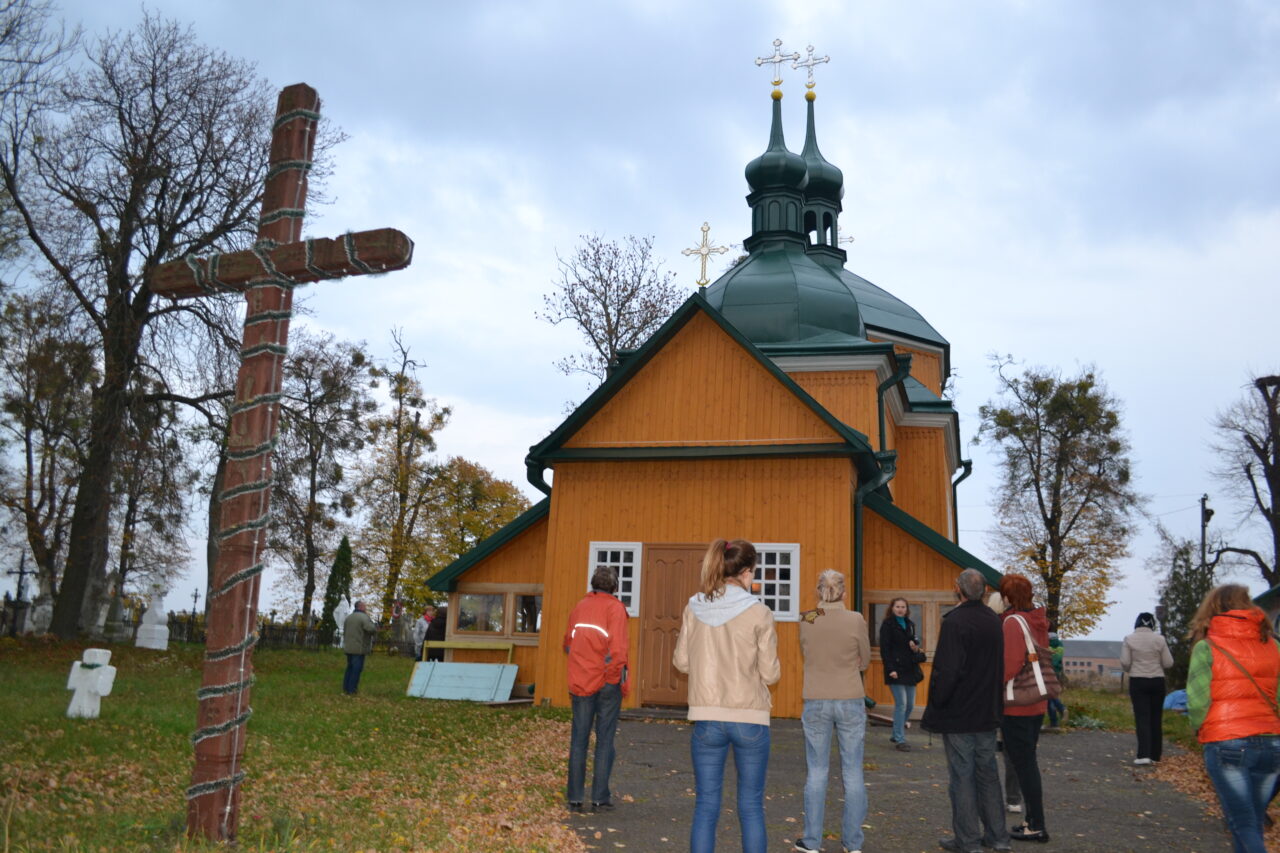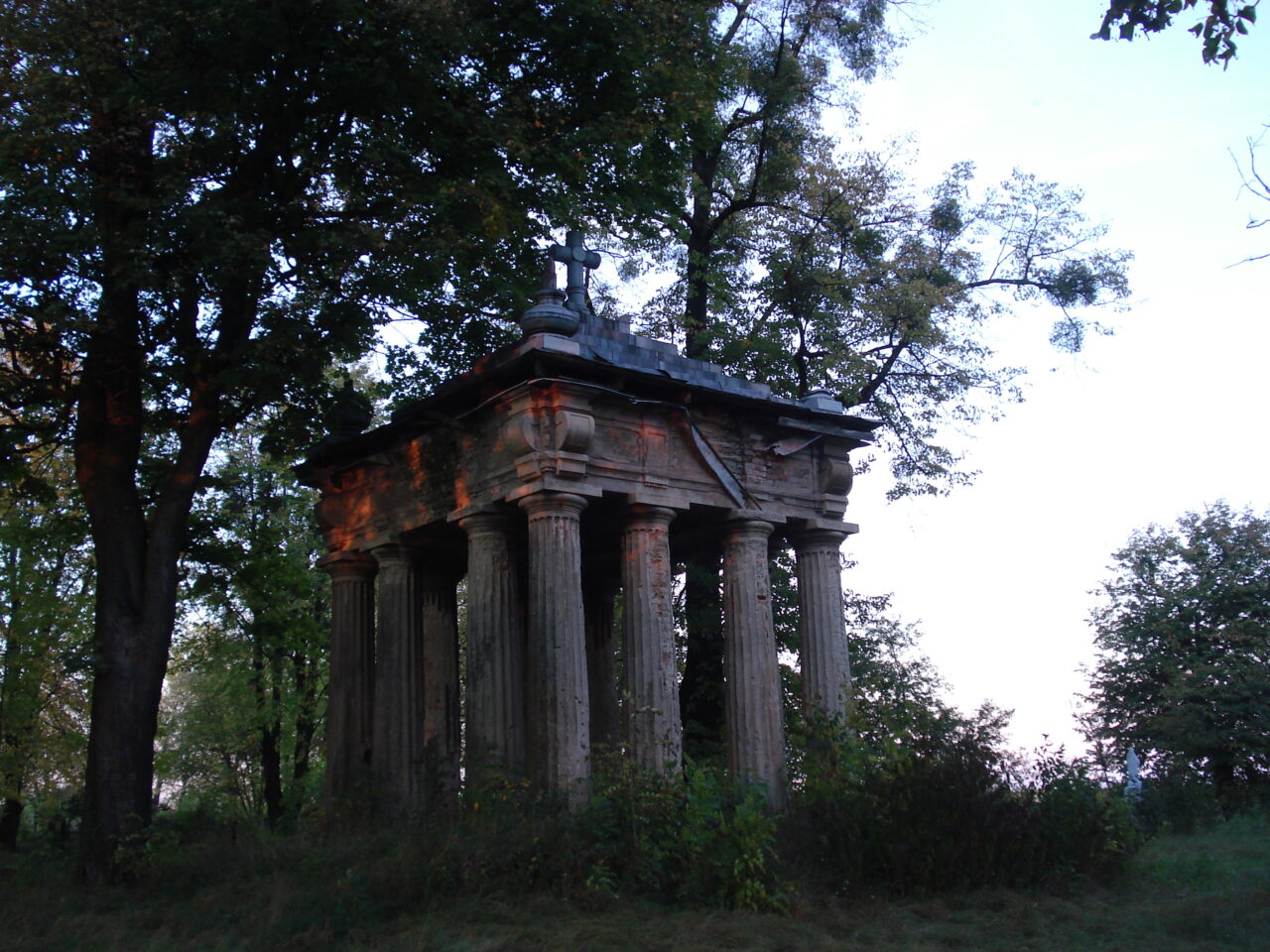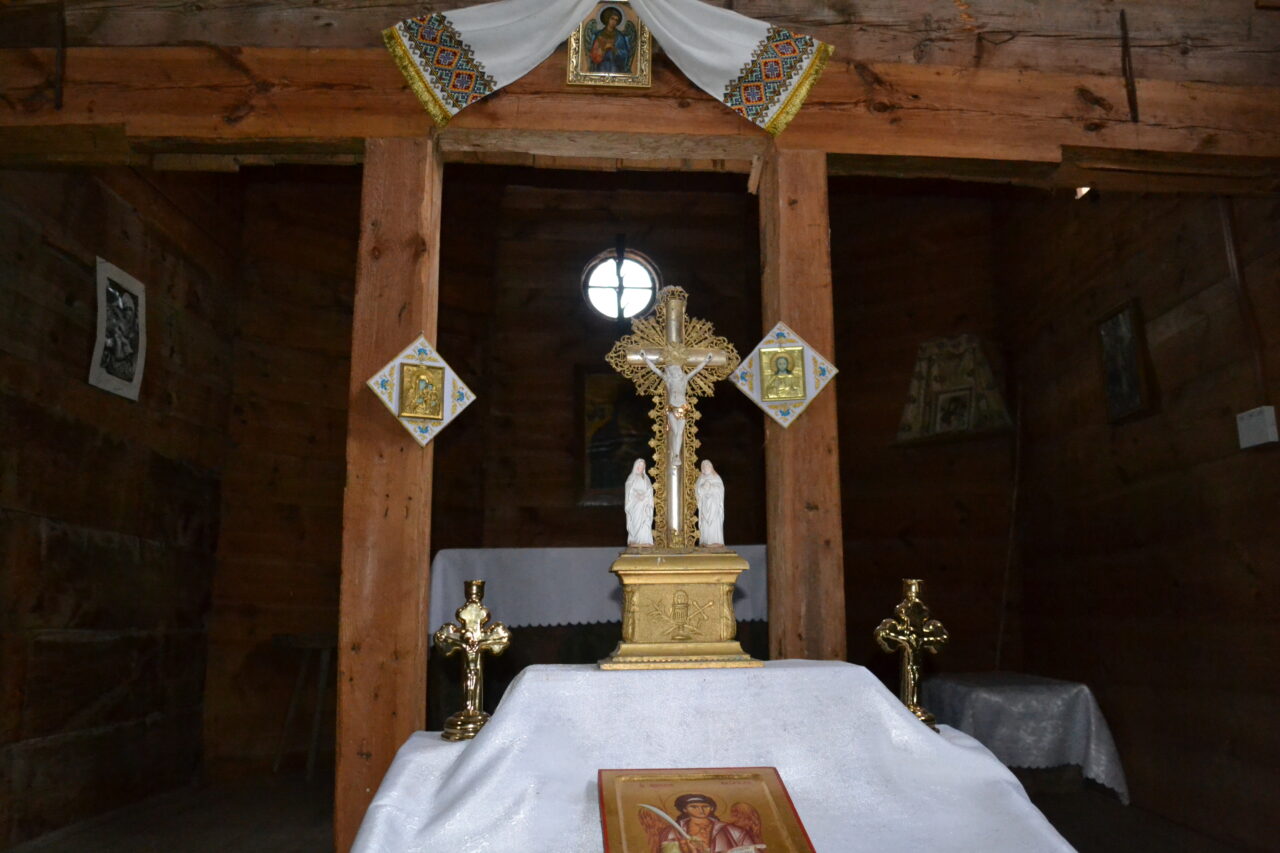Once the largest in the vicinity, and no the tiny Kuty village (only 470 inhabitants!) is located just a few kilometers from one of the most famous castles in Lviv region – Oleskyi one. This ancient village is located on the Liberka River and during the Middle Ages Kuty belonged to Gnievush family.
The first mention of Kuty dates back to 1441, although it was founded much earlier. In 1241 the Tatars destroyed the Plisnesk ancient city. The inhabitants fleeing from the Tatars, fled to the swamps and forests, as there were a lot of them in the surrounding area. Thus the refugees settled on the shores of the full-flowing glacial lake – the Blue Sea. There are only two streets in this village, but you can also find a lot of interesting things there, in particular the monumental St. Michael’s church. The wooden church of St. Michael the Archangel bates back to 1697. Carpenter Hryhorii Hebych from Sasiv is believed to be the author of this temple. This church is one of the brightest representatives of the Volyn School of Ukrainian wooden architecture.
The wooden, three-logged, three-domed church is based on the square central log house. The square narthex is adjoined to the west of this log house, and to the east there is a log house underlined by faces. It is difficult to say, what exactly the church looked like in its first years, because during its history the church was rebuilt several times. Thus, in the second half of the 19th century an arcade gallery was erected under the long gallery, and later the eastern part of the temple was supplemented with a sacristy.
At the beginning of the 20th century, several thorough reparations were carried out, primarily they concerned the central log house and the nave, they were covered with a new four-pitched roof and an octagonal baroque dome was built over the eastern volume. The hipped roof above the central log house was also completed with a dome.
Inside the temple, between the central log house and the narthex an arch cut-out was installed. In order to increase the height of the side logs visually, the inner space of the central volume was opened and the dome base at the level of the bend of the second row was strengthened with brackets in the shape of cross ties. During the 1930s the church underwent several other renovations, which resulted in plank on the walls instead of shingles, and later the central dome was covered with tin.
In the 1970s the Ukrainian Society for the Protection of the Historical and Cultural Monuments and the Lviv Art gallery took the church of St. Michael the Archangel under their care. However only in 2008 students of the Banking University of the NBU organized a charity event to raise money for the temple restoration.
Borys Voznytskyi, the director of the Lviv Art Gallery, personally joined the charity event. Two years of hard work and search for sponsors allowed to collect more than 200000 hryvnias, due to which it was possible to repair the shrine roof, equip it with a fire protection system and install an alarm system.
In September 2010 during the grand opening of the restored church, the first service and consecration of the returned old iconostasis was held.
At the same time, the first Temple of Remembrance in Ukraine was opened in the sanctuary, due to the Austrian experience of making ancient churches a new tourist attraction. The purpose of this temple is, in addition to worshipping, to preserve information about the history of the village and its famous inhabitants. The organizers hope that in this way it will be possible to give the church an exceptional importance, and then the regional authorities will find the funds to completely restore the unique church.
Within this project a large amount of information was collected and placed on commemorative plaques with names. The plaques were placed on the temple wall. Among the well-known people from Kuty there are the Sich Rieflemen and the villagers who were convicted and taken to the Siberian camps in Soviet times, as well as those who were taken to Germany by occupiers for forced labor. During the shrine’s festival, which is celebrated on November 21, the locals pray and recall all those listed on the tables.
But the only thing that failed to get realized was the restoration of the wooden bell tower, built in the 18th century, which is a unique architectural monument. Square in plan, single-tiered, with a tent-shaped finish, the frame bell tower is waiting for restoration to complement the architectural ensemble of the St. Michael’s church.
The high artistic level of the interior decoration of St. Michael’s church in combination with its refined and original architecture give grounds to consider it one of the best examples of Volyn wooden architecture of the late 17th century, and it grants us with hope that the church in Kuty will be the pearl of ‘Golden Horseshoe’ expanded tourist route.

